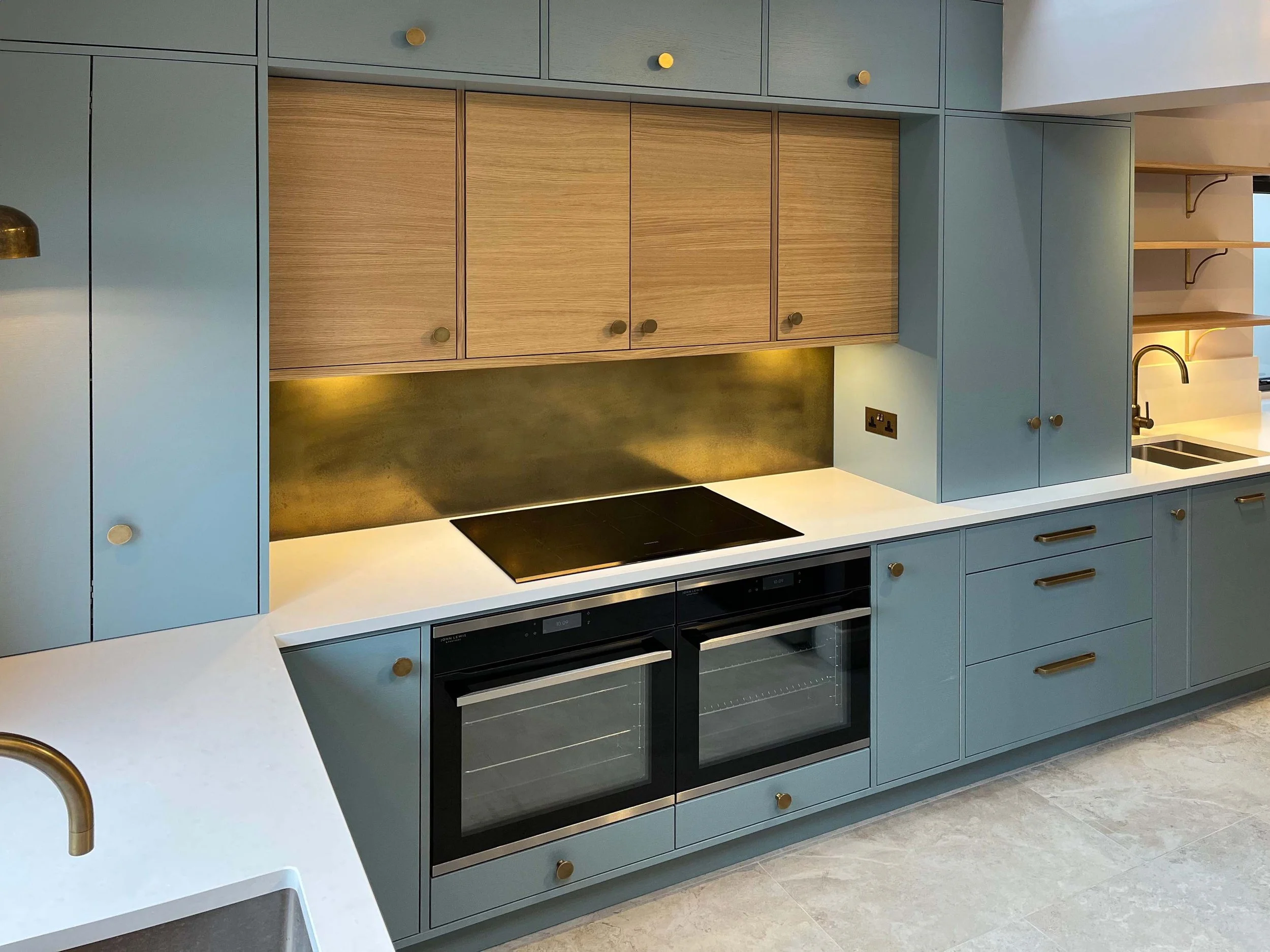Are you a storage dreamer or a storage realist?
How to avoid ‘clever’ storage solutions that don’t work for ADHD brains, and what to do instead.
I think people with ADHD fall into 2 camps – Dreamers and Realists.
Dreamers want walls of perfect minimalist closed storage, and associate it with feeling calmer and being more organised. Realists want practical storage that they know they can keep on top of, given the limitations of ADHD when it comes to organisation.
I could probably be more of a Dreamer if I lived alone and didn’t have children, but the reality is everyone in the household needs to be on the same page AND have the ability to keep on top of organisation routines for that to work.
Caveat, every ADHD brain is different. Some people have trained themselves to be super organised and rely on taking time over organisation rituals for dopamine. If that’s you, these tips probably aren’t necessary for you! Equally, you don’t have to have ADHD for thi approach to be helpful. This could be the answer for anyone neurodivergent, fatigued or struggling with brain fog (pregnancy and perimenopause, I see you!).
This is for the people who try and fail, who are always investing in storage solutions which never quite work out, and who know that if they only had an organised space, they could cope so much better!
Hallway
Doesn’t work: 60cm deep cupboards with hangers and shelves. Why not? Because things get pushed to the back of deep shelves meaning you have as much chance of using them as if they were lost forever, and coats will never get hung on hangers because there’s too many steps involved (i.e. too much demand).
Does work: 40cm deep drawers, baskets for shoes, wall-to-wall hooks for coats. Why? Because you can see everything easily whilst keeping it contained, and there are fewer steps required to keep your stuff tidy so you’re more likely to stick to it.
Kitchen
Doesn’t work: bin in a cupboard with a lid you have to lift off. Why not? Because there’s too many steps involved – opening the door, lifting the lid, putting the rubbish in the bin, putting the lid back on, then shutting the door. Invariably it will end up left open or with a pile of rubbish on the side waiting to be put in.
Does work: bin in a cupboard with integrated lid. Why? It’s still neater than a freestanding bin (with obligatory satellite rubbish bags!) but opening the door lifts the lid so it’s ‘low-demand’ as reduces the number of steps you have to perform.
Doesn’t work: larder cupboard with internal drawers. Why not? Similarly, it’s too many steps which is frustrating, so you end up leaving the doors open.
Does work: a larder made up of a drawer unit below and dresser unit above. Why? Because it avoids a 2-step storage solution.
Cleaning products
Doesn’t work: all cleaning products kept in a cupboard under the kitchen sink. Why not? Because ADHD brains find it hard to remember to do jobs unless they can see them, and struggle to follow through if the materials required are not immediately to hand.
Does work: keep duplicate cleaning products in each room that needs them (remembering to keep them out of reach of children). Why? You can easily do little whenever you spot something that needs cleaning if you have the materials to hand.
Bathroom
Doesn’t work: decanting your lotions and potions into beautiful bottles. Why not? Bottles never fit the whole amount, so you have to store what doesn’t fit then forget to use the rest up. The bottles get all sticky/limescaled and don’t look beautiful any more.*
Does work: pots without lids and hanging baskets. Why? You know where everything is (small storage and categories work best for ADHD brains, not having everything lumped together). Baskets and pots are an easy-to-access 1-step storage solution, whilst still hiding unsightly packaging.
*Decanting actually worked for me before I had kids when I had more time for showers and beauty routines as a ritual thing – it gave me a dopamine boost. But this hack is for all those busy people and harassed parents who don’t have time!
Garage storage
What doesn’t work: boxes. Why not? You can’t see where anything is so it’s frustrating to find anything, and things will go into boxes and stay there for decades because of ADHD’s lack of object-permanence.
What does work: Shelf racks and wall hooks. Why? You can make everything visible and accessible, whilst still being neat and organised.
North-facing rooms have long been underestimated, often labelled as difficult to decorate, but if we learnt to embrace their natural qualities rather than fight them, we can create spaces that feel harmonious and inviting. So, instead of lamenting a north-facing room, see it as a blank canvas for a serene, sophisticated retreat within your home. And if you’d like more support to make the most of your four walls, get in touch, I’d love help help!
Bedroom
What doesn’t work: Lots of free-standing storage, especially if its plastic! Why not? Rows of furniture around the room looks like a junk shop, not a relaxing sanctuary. Chances are you still end up with piles of laundry, accessories or make-up on every available surface because we need bedroom storage at the end of the day when we’re too tired to tidy up properly.
What does work: Make what you already do look pretty, such as an open shelving unit for wicker laundry baskets, so you can wear your clothes straight from the clean laundry instead of having to put it into drawers. Why? It creates a system that works with your ADHD brain.
Key Take Aways
Avoid 2-step storage solutions, reduce demand
Use drawers or shallow shelves where stuff can’t get lost at the back
Don’t invest in storage systems that create more work for you
Keep things visible but neat by using baskets, lidless pots and hooks
Work with your brain by making what you already do look prettier
Invest in an interior design consultation for personalised help to make your storage work for you, I’d love to help!






